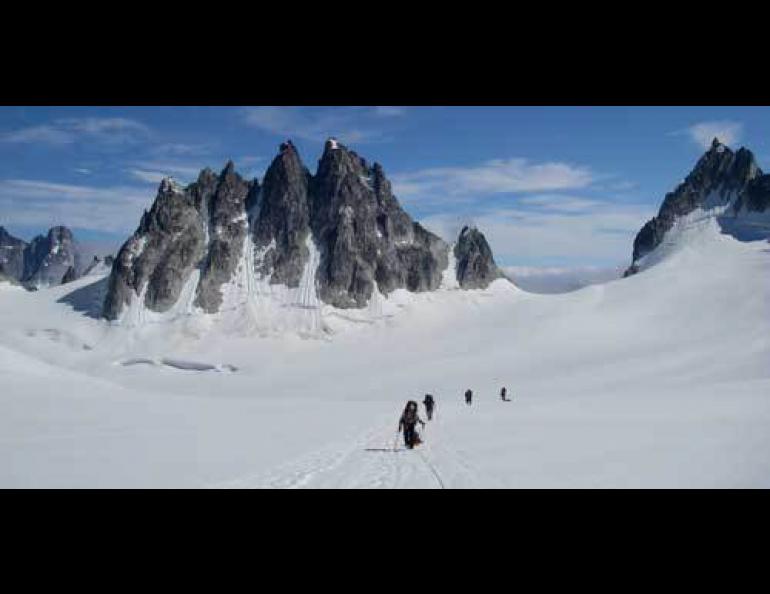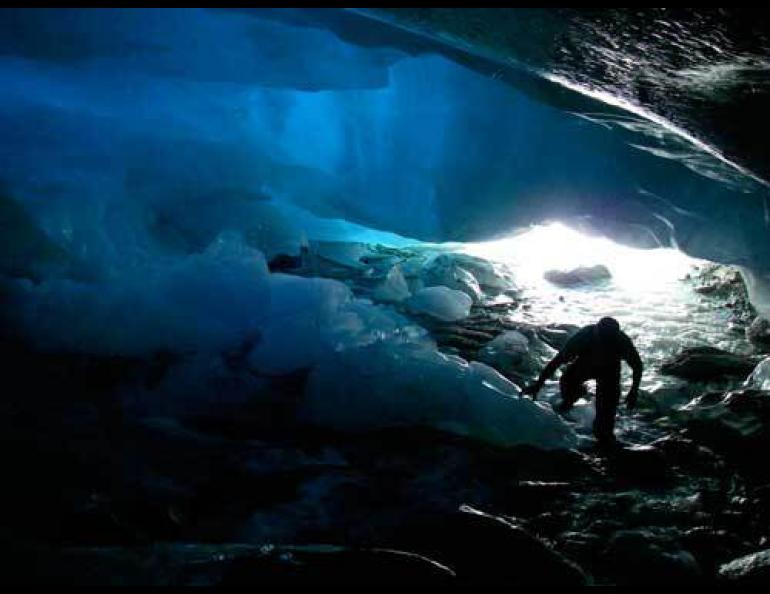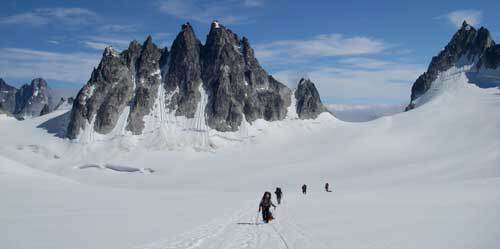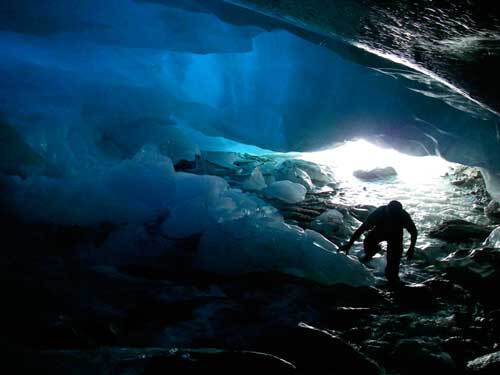

Whither the ice worms? Team offers bounty
A five-man team just returned from a walking tour of Alaska Range glaciers where they had hoped to spot the mythical ice worm, a fingernail-clipping size creature that lives on ice and dies away if from it. After 11 days of moving, they found no worms.
Before the team left Talkeetna on an air charter a few weeks ago, Dan Shain of Rutgers and Alaska Pacific University professor Roman Dial grilled a few mountaineers to find where they had seen ice worms in the past. Longtime Denali National Park Ranger Roger Robinson told them his spots. Dial then called mountaineer Brian Okonek in Washington, who backed up Robinson’s stories about encountering ice worms on climbing trips long ago.
“We put together a route that hit all the hot spots,” said Shain, who studies leeches and earthworms when he’s not looking at ice worms. “It’d be hard to search more extensively than we did.”
At dusk, when ice worms usually head to the surface, the team searched Pika, Crown, Kahiltna, Granite, and other glaciers.
“After making that trek in Denali, we concluded that worms weren’t there, and never were there,” Shain said. “However, that changed when we went to Learnard Glacier.”
After the Denali trip ended with what Shain called a “fantastic” float out in packrafts on the Tokositna River, he and Dial went down to Learnard Glacier near Whittier. Shain had been there years before, and had seen many worms. Not so this time.
“The worms were just about gone,” Shain said. “We found about one worm every 10 square meters; there used to be hundreds per square meter.”
Shain and Dial saw that Learnard Glacier was quite similar–with a steep upper part and a wide lower valley–to Crown Glacier in the Alaska Range. Shain also noticed that the glacier had shrunk since the last time he was there.
“It was dramatic to see that much ice loss,” he said.
Shain now thinks that the Alaska Range glaciers probably had ice worms in the days that Robinson and Okonek spotted them, about 20 years ago, but perhaps those glaciers shrunk like Learnard, losing the snow portion that is critical habitat for ice worms’ favorite food, algae.
“They may be on their way to a local extinction,” Shain said of the Learnard Glacier ice worms, which Dial noticed were quite large, perhaps the burly survivors of the once-ample population.
As for the ice worms on the colder glaciers of Denali National Park, Shain thinks “they’re likely gone.” Dial was more optimistic.
“I’m just not going to give up on them yet,” Dial said. “I’d be really sad if we’re losing ice worms before we lose the glaciers.”
The worm hunters are offering an iceworm bounty to people who travel the glaciers of Denali National Park.
“We’ll give $100 to anyone who comes up with a sample of an iceworm and the lat/long (as which it was found),” Shain said. “We may have missed the worms of Denali.”
For more info about the bounty, Dial’s email is roman@alaskapacific.edu.
The next step for the ice worm hunters is to search for more worms. Dial will comb Chugach Range glaciers, and Shain will go to British Columbia and southern Alaska next year. Before that, though, Shain is on his way to Brazil, where he will look for earthworms that are longer than he is tall.





